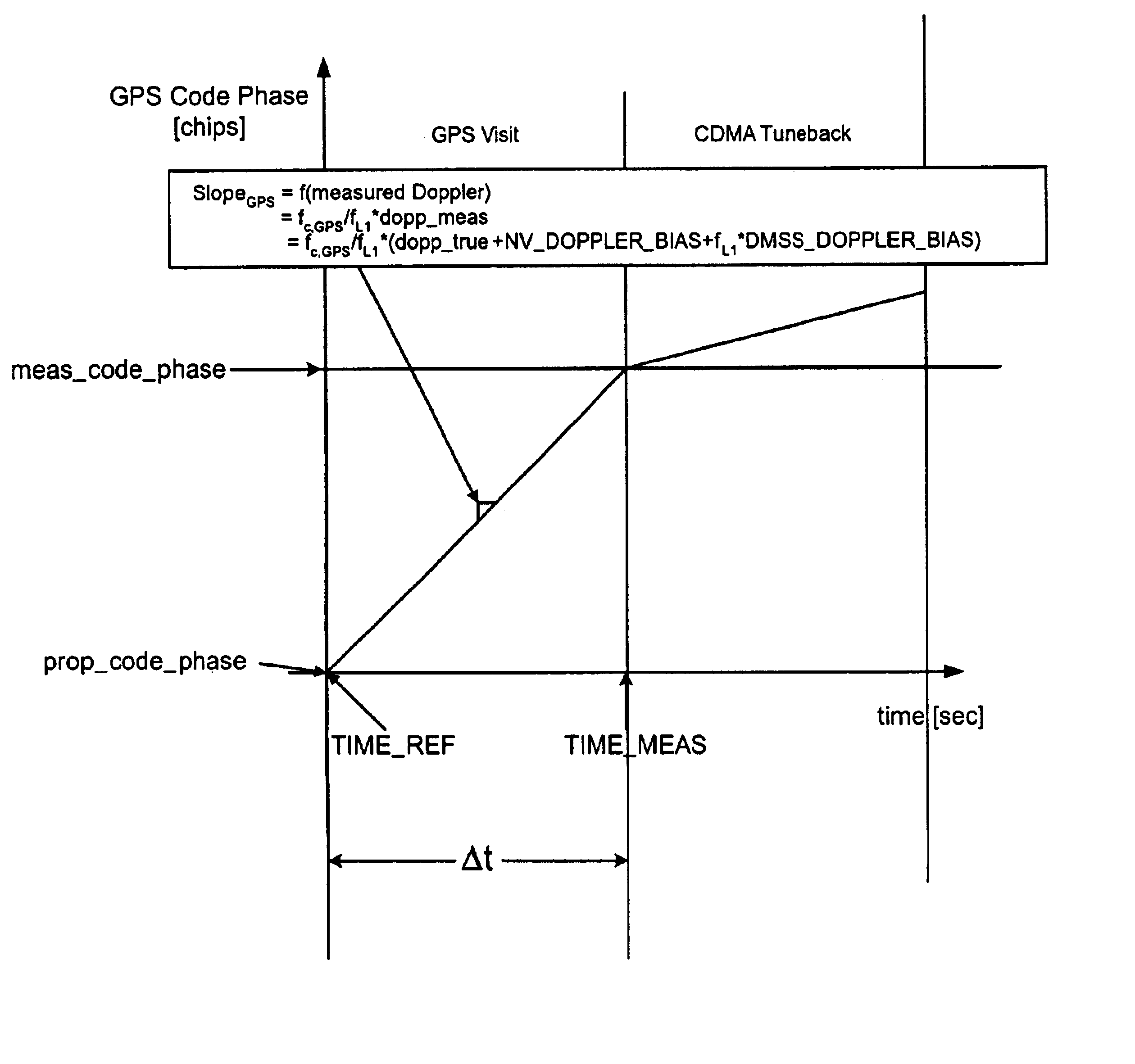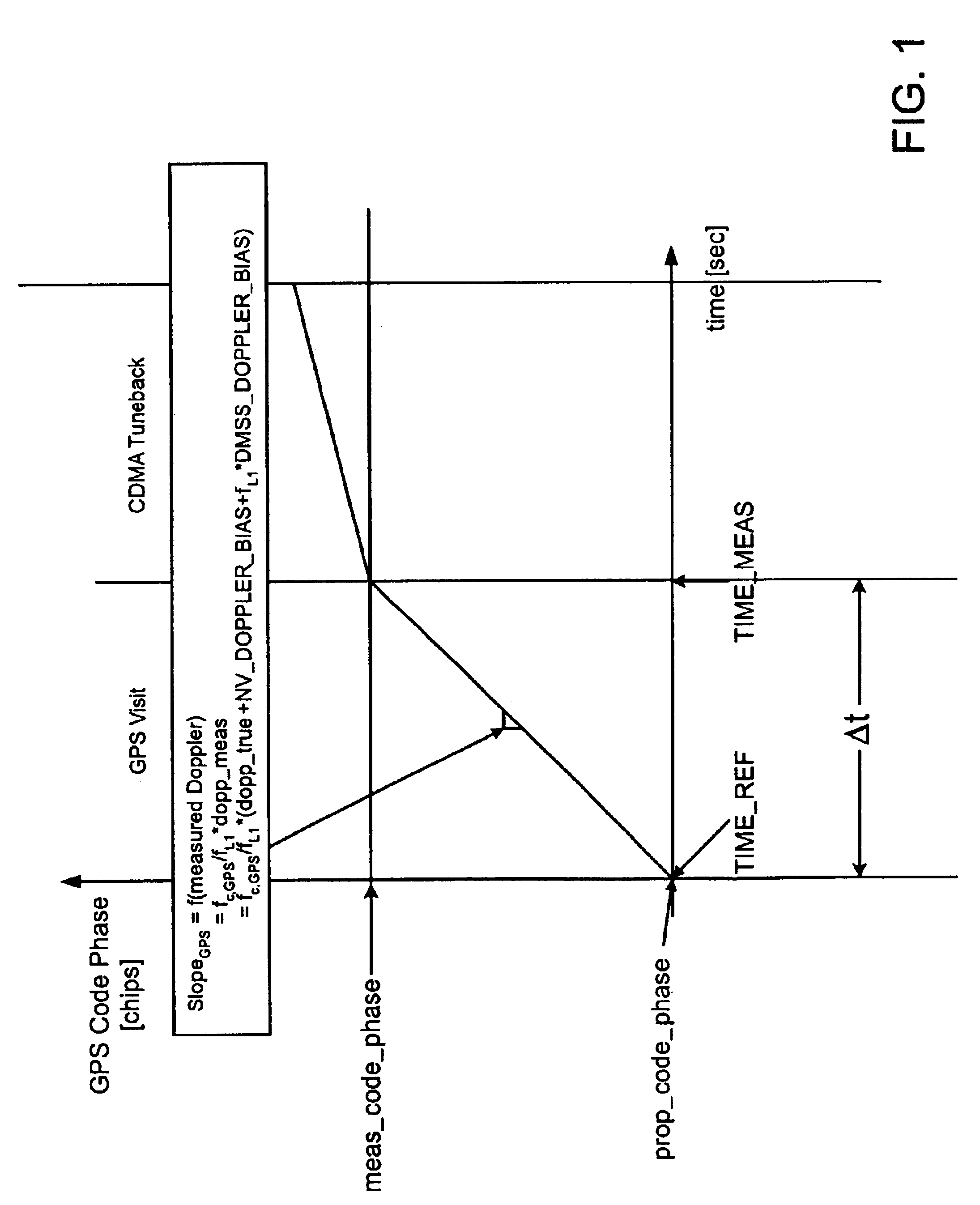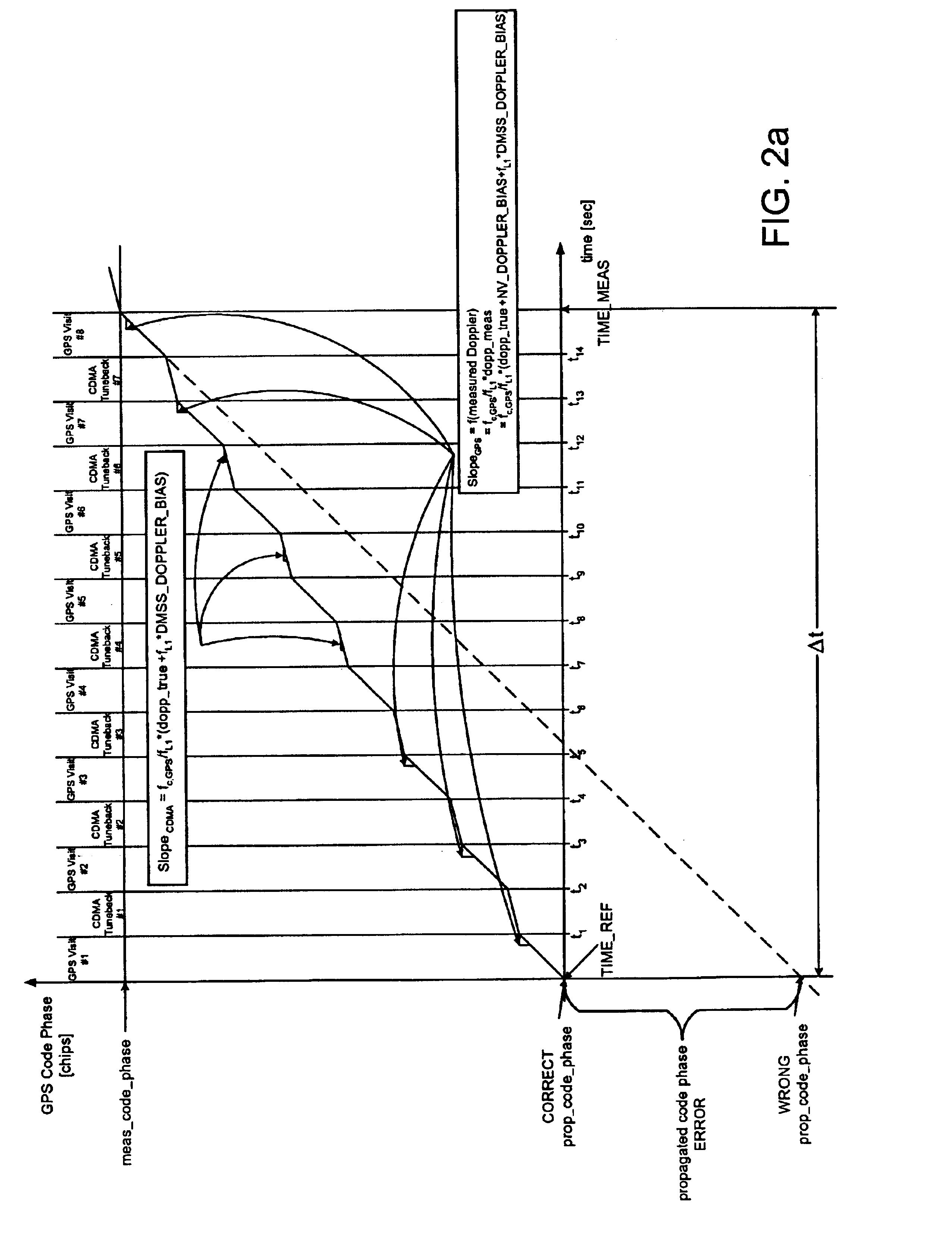Method and apparatus for optimizing GPS-based position location in presence of time varying frequency error
a position location and time-varying frequency technology, applied in the field of communication systems, can solve the problems of reducing the gps measurement yield, large unaccounted, and negatively affecting the position determination accuracy of a mobile station or wireless communication device, and achieve the effects of improving the gps pseudorange measurement yield and position accuracy, and improving the accuracy of position location
- Summary
- Abstract
- Description
- Claims
- Application Information
AI Technical Summary
Benefits of technology
Problems solved by technology
Method used
Image
Examples
Embodiment Construction
[0019]A novel and improved method and apparatus for performing position location in a wireless communications system is described. The exemplary embodiment is described in the context of the digital cellular telephone system. While use within this context is advantageous, different embodiments of the invention may be incorporated in different environments or configurations.
[0020]In general, the GPS constellation consists of 24 satellites: 21 space vehicles (SVs) used for navigation and 3 spares. Each SV contains a clock that is synchronized to GPS time by monitoring ground stations. To determine a position in time, a GPS receiver processes the signals received from several satellites. At least four satellites must be used to solve for the 4 unknowns, which are X, Y, Z and time. It should be appreciated, however, that the invention is not limited to the use of any particular kind of global satellite system for assisting position location.
[0021]In general, to practice the present disc...
PUM
 Login to View More
Login to View More Abstract
Description
Claims
Application Information
 Login to View More
Login to View More - R&D
- Intellectual Property
- Life Sciences
- Materials
- Tech Scout
- Unparalleled Data Quality
- Higher Quality Content
- 60% Fewer Hallucinations
Browse by: Latest US Patents, China's latest patents, Technical Efficacy Thesaurus, Application Domain, Technology Topic, Popular Technical Reports.
© 2025 PatSnap. All rights reserved.Legal|Privacy policy|Modern Slavery Act Transparency Statement|Sitemap|About US| Contact US: help@patsnap.com



